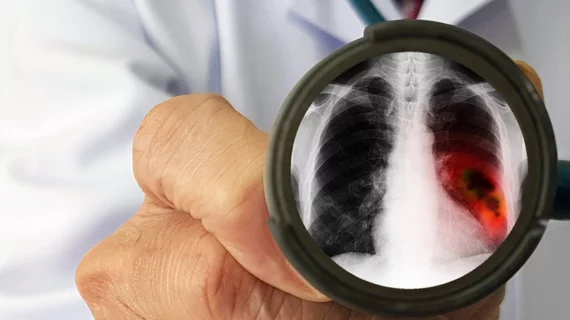Lung cancer screenings are proven to save lives, but disparities remain, experts discover
Lung cancer screenings have saved thousands of lives since their introduction in 2013, but according to research published in the BMJ, outreach disparities remain.
Many years after the debut of low dose computed tomography (LDCT) lung cancer screenings, early detection of stage 1 non-small cell lung cancer (NSCLC) has increased by 3.9% per year, experts recently shared. All-cause survival rates have followed suit, rising by a median 11.9% every year since the utilization of LDCT screenings increased in 2014. While LDCT screenings are clearly associated with earlier detection and better survival rates, researchers caution that these benefits are largely confined to certain populations.
“We found disparities in the stage of lung cancer at diagnosis among subgroups of patients,” corresponding author Chi-Fu Jeffrey Yang, of the Division of Thoracic Surgery at Massachusetts General Hospital in Boston, and co-authors revealed. “Patients who were non-Hispanic white and patients living in better educated and higher income areas were more likely to have stage 1 disease than stage 4 disease at diagnosis.”
Data was analyzed from 763,474 patients ages 45-80 years diagnosed with NSCLC between January 2010 and December 2018 to determine how screening impacted diagnoses and all-cause survival before and after implementation. Researchers used information from the U.S. National Cancer Database and the Surveillance Epidemiology End Results program to conclude that lung cancer screenings, which have resulted in earlier malignancy detection, saved 10,100 lives between 2014 and 2018.
Between 2010 and 2013, before LDCT screenings were widely utilized, there were no significant changes in early detection or all cause survival rates. However, between 2014 and 2018, these figures began to increase. Stage I NSCLC diagnoses rose from 30.2% to 35.5% during this time, and median all cause survival began to grow by 11.9% per year (from 19.7 to 28.2 months).
These findings were unfortunately limited to the non-Hispanic white population living in regions with higher incomes and better education. Non-white individuals and people living in less educated, lower income areas continued to be more likely to receive an advanced diagnosis, such as stage 4 disease, during this time.
“These findings suggest that the widespread adoption of low dose computed tomography screening should be considered an important strategy for reducing mortality from lung cancer in the US,” the authors wrote. “Efforts to increase utilization of screening should be prioritized to ensure equitable access to screening and to reduce disparities in the stage of lung cancer diagnosed and in survival among different patient populations with lung cancer.”
Related cancer screening articles:
These image findings on LDCT screenings offer insight beyond lung cancer
Q&A: What updated reimbursement policies could mean for CT lung screening rates in the United States
Rural veterans less likely to get LDCT lung cancer screenings, prompting doctors to call for change

